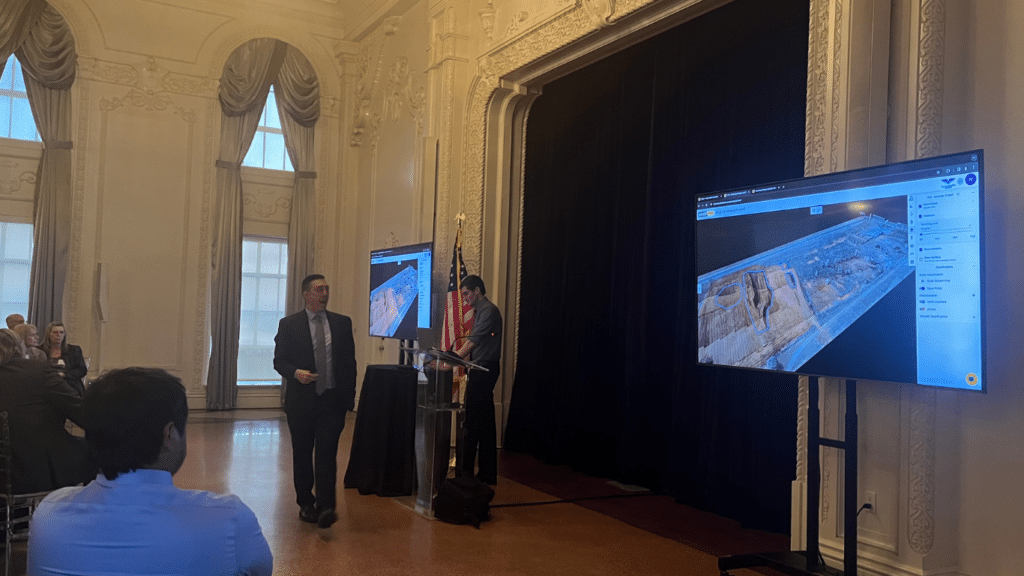LiDAR uncover Mayan Temples might sound like a plot straight out of a science fiction novel, but this revolutionary technology has indeed transformed the field of archaeology. By combining powerful lasers with aerial drones, researchers are unlocking secrets of the past that were once hidden beneath dense jungles and time. In this article, we’ll explore how LiDAR drones have discovered lost Mayan temples in Mexico, delving into the technology’s applications, benefits, and the exciting prospects it holds for the future of archaeological explorations.
What is LiDAR Technology?
Brief Overview of LiDAR
LiDAR, which stands for Light Detection and Ranging, is a remote sensing technology that uses lasers to measure distances and create detailed, accurate representations of the environment. By emitting laser pulses and measuring the time it takes for the light to bounce back after hitting an object, LiDAR can calculate distances with remarkable precision.
How LiDAR Works with Drones
When mounted on aerial drones, LiDAR systems become even more powerful tools for mapping and exploring. As drones fly over an area, their onboard LiDAR sensors emit thousands of laser pulses per second. These pulses penetrate through vegetation and other surface obstructions, providing detailed information about the terrain and any hidden structures beneath the canopy. The resulting data can then be processed to create high-resolution, three-dimensional maps of the landscape and unearth previously undiscovered archaeological sites.
The Discovery of Lost Mayan Temples and Ancient Ruins in Mexico
Challenges Faced by Archaeologists
Before the advent of LiDAR technology, archaeologists faced numerous challenges in their efforts to uncover and study ancient Mayan sites. Dense rainforests, rugged terrain, and limited access made it difficult to conduct thorough surveys and excavations. Traditional methods, such as ground-based mapping and satellite imagery, often fell short in providing accurate and detailed information about the hidden treasures beneath the thick vegetation.
The Role of LiDAR Drones in the Discovery
LiDAR drones have revolutionized the field of archaeology by providing a non-invasive and efficient way to explore vast areas and detect hidden structures. They have enabled researchers to overcome the challenges posed by traditional methods and make groundbreaking discoveries in the search for lost Mayan temples and ancient ruins in Mexico.
Specific Ancient Ruins Discovered by LiDAR
One of the most notable discoveries made using LiDAR technology is the ancient city of Takalik Abaj, which was initially thought to be a hill. The city, dating back to 1,000 BCE, was found beneath the dense rainforest in Guatemala. The use of LiDAR drones in this case not only led to the discovery of the city but also unveiled a vast network of roads, residential areas, and ceremonial complexes that were previously unknown.
Another example is the identification of an extensive causeway network that connected various Mayan settlements in Mexico. LiDAR data revealed the intricate system of roads, which played a crucial role in the Mayan civilization’s communication, trade, and transportation infrastructure.
Insights Gained about the Maya Civilization through LiDAR
The Ancient City Found Using LiDAR
As mentioned earlier, the ancient city of Takalik Abaj was discovered using LiDAR technology. This significant finding has provided archaeologists with valuable insights into the Mayan civilization’s urban planning, architectural styles, and the extent of their influence in the region.
Nature of Ancient Maya Society Revealed by LiDAR Imagery
LiDAR imagery has been instrumental in uncovering the complex nature of ancient Maya society. The discovery of the extensive causeway network, for example, demonstrates the advanced level of infrastructure and connectivity among various Mayan settlements. This intricate system of roads suggests that the Maya civilization was highly organized, with efficient communication, trade, and transportation systems in place.
Laser Scans Uncovering 60,000 Hidden Maya Structures in Guatemala
In another groundbreaking discovery, LiDAR scans revealed more than 60,000 hidden Maya structures in Guatemala, including houses, defensive walls, and agricultural terraces. These findings have shed light on the population density and agricultural practices of the ancient Maya civilization, indicating that they were more extensive and sophisticated than previously believed.
Discovery of 650 Square Miles of Mayan Buildings under the Rainforest
LiDAR technology has also enabled researchers to uncover an astounding 650 square miles of Mayan buildings hidden beneath the rainforest canopy. This expansive area, comprising temples, palaces, and residential structures, provides a glimpse into the scale and complexity of Mayan urban centers and their architectural prowess.
The Largest and Oldest Maya Monument Discovered with LiDAR
Using LiDAR technology, archaeologists discovered the largest and oldest Maya monument known to date, Aguada Fénix. Located in present-day Mexico, this massive structure measures approximately 4,590 feet long, 49 feet tall, and dates back to around 1000 BCE. The discovery of Aguada Fénix has reshaped our understanding of early Maya civilization and the development of monumental architecture in Mesoamerica.
The Presence or Absence of Mayan Bodies Found Using LiDAR
While LiDAR technology has been incredibly effective in identifying hidden structures and mapping the landscape, it does not have the ability to detect human remains directly. Nevertheless, the discoveries made using LiDAR have led archaeologists to conduct targeted excavations, which have, in turn, led to the discovery of Mayan burial sites and artifacts that provide valuable insights into their culture and rituals.
Applications of LiDAR in Archaeology
Mapping and Surveying
LiDAR technology has significantly improved the process of mapping and surveying archaeological sites. By providing high-resolution, three-dimensional data, LiDAR allows for the accurate and detailed representation of landscapes, hidden structures, and other features that were previously inaccessible or invisible using traditional methods.
Digital Terrain Models
LiDAR data can be used to create digital terrain models (DTMs) that display the natural and artificial features of a landscape. These models offer invaluable information to archaeologists, enabling them to understand the layout of ancient settlements, identify areas of potential archaeological interest, and plan targeted excavations more effectively.
Monitoring and Preservation
LiDAR can also play a crucial role in monitoring and preserving archaeological sites. By regularly conducting LiDAR surveys, researchers can track changes in the landscape and identify any potential threats to the site, such as erosion or human encroachment. This information can help archaeologists and conservationists develop strategies to protect and preserve these invaluable historical treasures for future generations.
Benefits of Using LiDAR in Archaeological Explorations
Time and Cost Efficiency
One of the most significant advantages of using LiDAR in archaeology is its ability to save both time and money. Traditional surveying methods can be labor-intensive, time-consuming, and expensive. In contrast, LiDAR drones can cover vast areas quickly and efficiently, reducing the need for extensive ground-based surveys and enabling archaeologists to focus their efforts on specific areas of interest.
Improved Accuracy and Detail
LiDAR technology provides exceptionally accurate and detailed information about the landscape and hidden structures. Its ability to penetrate dense vegetation and create high-resolution, three-dimensional maps allows researchers to gain insights into the past that were previously impossible using conventional methods.
Non-invasive and Environmentally Friendly
LiDAR is a non-invasive technology, meaning that it does not require any physical intervention or disturbance of the landscape. This makes it an environmentally friendly option for archaeological exploration, as it minimizes the impact on the natural environment and preserves the integrity of the sites being studied. Additionally, the non-invasive nature of LiDAR enables archaeologists to gain valuable information about sites that may be too fragile or inaccessible for traditional excavation methods.
Future Prospects of LiDAR Technology in Archaeology
As LiDAR technology continues to advance, its applications and potential benefits for archaeology are expected to grow exponentially. Here are some of the future prospects for LiDAR in the field of archaeology:
Enhanced Resolution and Accuracy
As LiDAR sensors become increasingly sophisticated, they are expected to provide even greater resolution and accuracy in the data they collect. This will allow archaeologists to detect smaller and more subtle features, further enhancing our understanding of ancient civilizations and their landscapes.
Integration with Other Technologies
The combination of LiDAR with other emerging technologies, such as artificial intelligence (AI) and machine learning, promises to revolutionize archaeological research. By analyzing vast amounts of LiDAR data, AI algorithms can potentially identify patterns and anomalies that human researchers may overlook. This fusion of technologies could lead to more accurate interpretations of the data and the discovery of previously unidentified archaeological sites.
Expanded Access to LiDAR Technology
As the cost of LiDAR technology continues to decrease, it is expected that more archaeological projects will have access to this powerful tool. This increased availability will enable researchers from around the world to make use of LiDAR data, leading to a more comprehensive understanding of global archaeology and the shared history of human civilizations.
Virtual Reality and LiDAR
The integration of LiDAR data with virtual reality (VR) technology offers exciting possibilities for the future of archaeology. By combining high-resolution LiDAR scans with immersive VR environments, researchers and the public can experience archaeological sites in a whole new way, fostering a deeper understanding and appreciation for our shared cultural heritage.
Preservation and Education
As LiDAR becomes more widely adopted in archaeological research, the data collected will play a crucial role in the preservation and education of future generations. Detailed, accurate digital records of archaeological sites can serve as valuable resources for future research, conservation efforts, and educational initiatives, ensuring that these precious remnants of our past are protected and appreciated for years to come.
In conclusion, LiDAR drones have revolutionized the field of archaeology, enabling researchers to uncover lost Mayan temples in Mexico and gain insights into the past that were once impossible to achieve. The innovative applications of LiDAR technology have streamlined archaeological processes, provided accurate and detailed data, and offered a more sustainable, non-invasive approach to exploring our world’s history.
If you’re fascinated by the power of LiDAR and its potential to change the way we understand the past, don’t hesitate to learn more about its applications and benefits here. For all your drone service needs, be sure to contact Blue Falcon Aerial – our team of experts is always ready to provide cutting-edge solutions tailored to your unique requirements.




